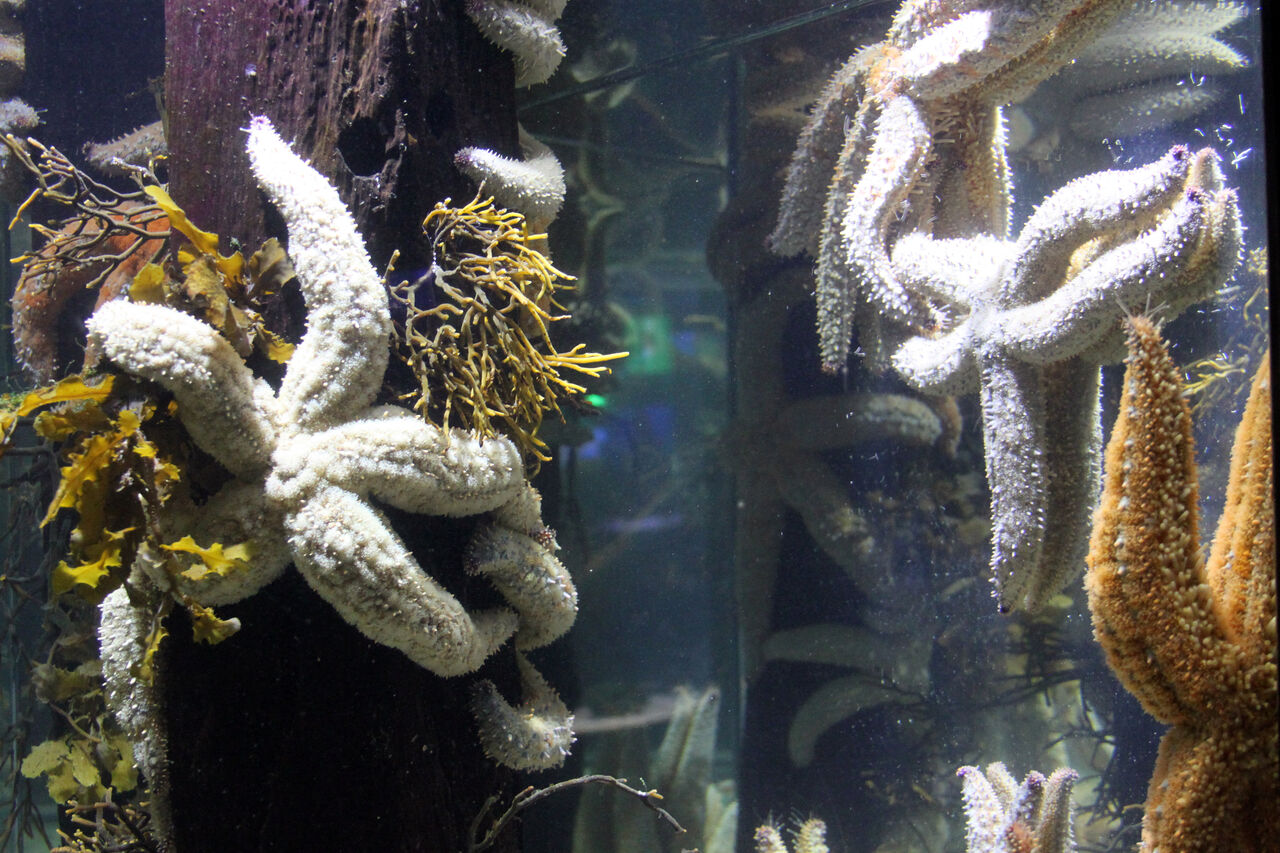If you've ever explored a rocky shore or enjoyed a swim in a tidal pool, you would most likely have come across a starfish. These beautiful animals are a bit tricky to spot, but you're guaranteed to find them at the Two Oceans Aquarium!
Spiny starfish (Marthasterias glacialis) are relatively large starfish with five slender arms attached to their small central disc-like bodies. The colour of these animals may vary, and are usually either brownish-orange or greenish-grey, with yellow, red, or purple tips on their arms. These species can grow up to 70cm, but are usually around 25-30cm.
Although spiny starfish are rather colourful animals, and quite large in size, they can sometimes be difficult to spot in their natural environment. This is a result of their ability to camouflage on sand, rocks, and the ocean floor quite easily. They often use camouflage to avoid potential predators.
The typical spiny starfish diet consists mostly of mollusks, such as snails, oysters, and clams. However, their diet is not nearly as fascinating as the way they eat. These animals first attach their bodies to their prey and then begin to extend its stomach out through their mouths. Thereafter, the food is digested by substances within the stomach which allows the nutrients to enter the body after the stomach retracts back into it - which completes the digestion process.
Starfish generally are not very social animals. They tend to spend of their lives alone, except those who sometimes come together in groups at specific times of the year to feed.

Did you know?
When they are in a state of stress or panic, starfish will shed one or more of its legs, all of which grow back eventually. So, if you ever come across a spiny starfish missing a leg - it's perfectly normal.
Related News
Sign up to our Newsletter
Receive monthly news, online courses and conservation programmes.





